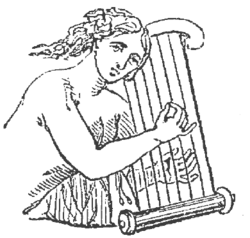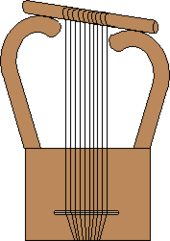This is an old revision of this page, as edited by 107.7.101.74 (talk) at 19:01, 8 January 2016. The present address (URL) is a permanent link to this revision, which may differ significantly from the current revision.
Revision as of 19:01, 8 January 2016 by 107.7.101.74 (talk)(diff) ← Previous revision | Latest revision (diff) | Newer revision → (diff) Ancient Nevel (Harp) Ancient Nevel (Harp) | |
| Classification | String instrument |
|---|---|
| Related instruments | |


The nevel or nebel (Template:Lang-he nêḇel) was a stringed instrument in use by the ancient Hebrew people. The Greeks referred to it as the nabla (νάβλα, cf. Latin nabilium). Much conjecture has been put forth on its exact nature, but it was probably not a standardized instrument. Most hold it to be a form of harp, or psaltery. The King James Version renders the word into English as psaltery or viol, and the Book of Common Prayer renders it lute. The word nevel means harp in modern Hebrew.
See also
References
- Rich, Anthony. A Dictionary of Roman and Greek Antiquities. New York: D. Appleton & Company. 1874. Page 439.
- Neil, James. Everyday Life in the Holy Land. London: Cassel & Company, Ltd. 19134. Page 218.